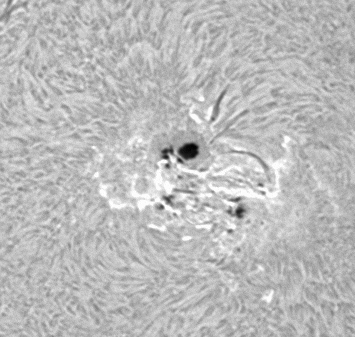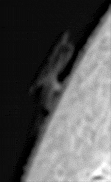OK first up
there will be a solar eclipse visible from the US on thursday 10/23/14.
http://shadowandsubstance.com/#Partial
needless to say, as it's only a partial eclipse, the sun will still be blindingly bright.
protective eye-wear or projection is a must for viewing.
not much happened in my full disk Ha animations.
close-ups of prominences however gave interesting movements.
so here are some close ups of the disk surface.
not quite as dramatic as a prominence lifting off, but still interesting.
first, here's the full field (click on image for full size):
high contrast grey-scale
here's a circular filament around an active region:
here are what look like classic magnetic field lines from one sun spot to another:
a filament arching off the surface:
eruptions around a sun spot, which, i guess is why they're called "active regions":
imaging details:
7/5/14 newport beach, ca
DMK 51, 2.5x Powermate, Lunt 60 PT B1200
2 hours of imaging at ~12 fps every other minute
best 300 frames every minute
7.8 ms exposure
the images were spoiled by dust on the sensor
finally salvaged them by creating artificial flats
though you can still see some faint shadows of dust spots in the animations
(right side of last)

























